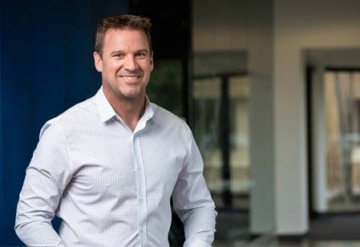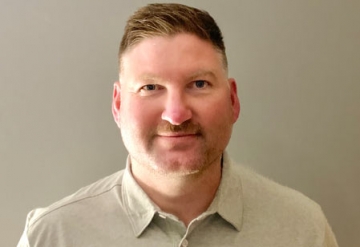THANK YOU FOR SUBSCRIBING

 Pietro Da Sacco, Engineering Manager, Doka USA
Pietro Da Sacco, Engineering Manager, Doka USAPietro Da Sacco is the Engineering Manager for Doka USA (Far West Branch), overseeing a team of Project Engineers and Field Service teams in the Western Region, including engineering and sales support on local and major projects. He also develops strategies, manages budgets, and ensures successful project execution by working closely with local and national teams, as well as collaborating with senior management personnel. Developing, leading, and training local Engineering and Field Service teams is his focus, ensuring the design, supply, and delivery of safe/economical formwork and shoring solutions are achieved to meet customers’ needs. He is also responsible for building loyal relationships with customers and ensuring the smooth flow of construction management practices and good communication across all departments.
In an interview, Pietro Da Sacco, engineering manager at Doka, USA, discusses the challenges faced by the construction industry.
What are some of the major challenges and trends that have been impacting the construction/formwork industry lately?
The need for continuous safety practices (both during the design stage and construction) in formwork and shoring projects creates an opportunity for us at Doka USA to finetune our solutions and efficiencies for safety. For example, we provide protection screens (aka ‘cocoon system’) that wrap around the exterior of high-rise projects for full perimeter protection.
This is only one of many formwork and shoring solutions, and it is in the early stages of project design (Engineering) that we can provide not only what our customers expect in the field but an additional level of safety for vertical formwork or horizontal (shoring) systems with safety (and safety factors) considered on all our projects. The major challenge is to properly train our customers with the level of safety built into each of our formwork and shoring systems, and this is achieved with expert field service technicians visiting the project during assembly stages to provide all the needed safety training prior to starting a project.
What keeps you up at night when it comes to some of the major predicaments in the construction/formwork industry?
Keeping a fluid communication line with our customers is essential in keeping the scope of our projects flowing without issue. Keeping these lines of communication open between all our teams (sales, operations, project management, engineering) and our customer allows for the best possible relationship building and trust that’s expected on large (or small) scale projects. Without good communication, there’s a chance of issues and/or surprises that could develop into problematic closing of projects and success with future work.
“Keeping a fluid communication line with our customers is essential in keeping the scope of our projects flowing without issue”
In this respect, with the relationships we’re building with customers, there’s much less back-charge potential if we can resolve issues early in the project stages. This can be achieved with proper lead time (which sometimes doesn’t happen) from initiating a new project, getting involved in the early stages with pre-sales support (conceptual drawings and brainstorming), and having good interaction with our customers so they are aware of the optimal formwork and shoring solutions for their projects’ various complexities.
Can you tell us about the latest project that you have been working on and what are some of the technological and process elements that you leveraged to make the project successful?
One of our latest projects is 555 Bryant in SoMa, San Francisco, a mixed-use mid-rise project (approx 19-floors) using our Elevator core formwork solutions (Framax and Top 50 formwork) for both cores and shearwalls with Xclimb 60 guided climbing system and gallow method allowing the core formwork to climb vertically, passing through slab openings, fixed to the previous level by vertical waling until ‘locked’ into the next ‘guiding shoe’ and ready for the next pouring step.The entire unit is always connected to the structure (an additional safety measure), even while it’s being repositioned and/or ‘climbed.’ Even during high wind conditions, an entire wall gang unit is repositioned safely and easily in one single lift. Some of the technological process elements used for formwork on this project include BIM services (Revit technology) merged with AutoCAD (our software is “DokaCAD.”) Using BIM software (Revit in this case), we can review and discover any potential clashes of our formwork systems (e.g., tie/anchors and rebar), and make any corrections along the way.
What are some of the technological trends which excite you for the future of the construction/formwork industry?
For formwork, shoring, and even scaffolding solutions, the technological ‘trend’ is shifting from CAD-based design to BIM software (including Tekla, most recently, as well as Revit). We also call these ‘DIGITAL services, and our Doka engineering teams across the USA have fully embraced the advances of BIM and continue to apply them to our wide ranging scope of construction projects. The goal is to be 100 percent BIM-focused, providing optimal formwork designs and 3D renderings with materials and project management functions built into the program. This is a process we’ve successfully achieved and continues to adapt as the complexities of projects consistently change.
Read Also
Development of the Logistics Warehousing Market in Brazil
Driving Innovation and Preserving Tradition
Operational Leadership VS Field Leadership in the Utility Construction Business
People-First Innovation: Developing Virtual Design and Construction (VDC) Training Programs to Empower Field Team Members
Sustainable Projects: Aligning Business and Purpose in Latin America
Engage Smarter: Why Constraints Matter More Than Hazards

 Copyright © 2025 All Rights Reserved | by:
Copyright © 2025 All Rights Reserved | by: Construction Tech Review
| Subscribe | About us | Sitemap| Editorial Policy| Feedback Policy














